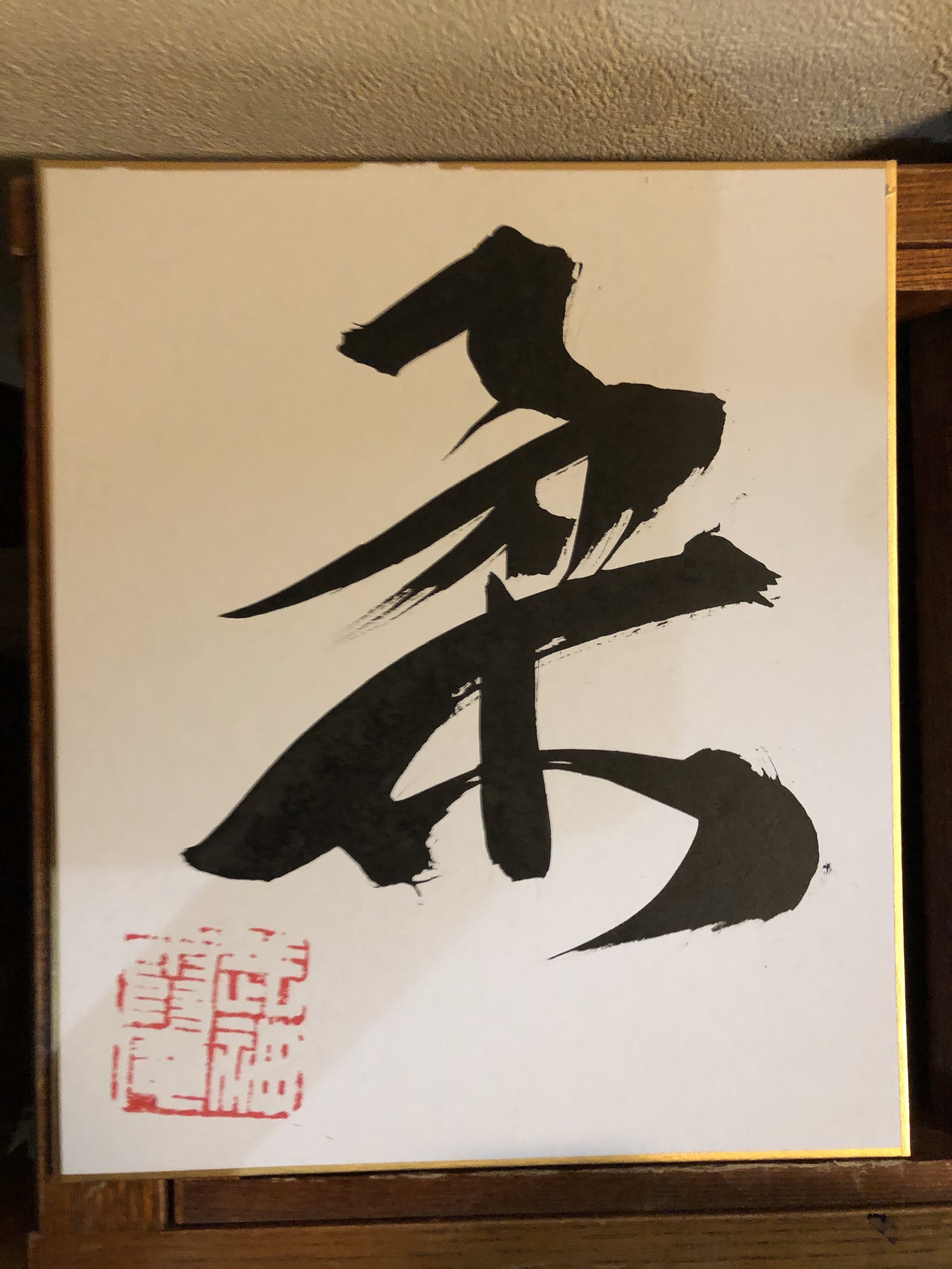artwork by Brady Hansen
The martial arts of Asia have developed over thousands of years of conflict. Although martial roots are in matters of life & death, these arts have developed to meet the changing needs of practitioners to offer more than just violence. Exercise, sporting competition, cultural immersion, spiritual practice & self defense are some of the many opportunities for self-actualization that can be discovered in training.
In Japanese, there are different words for “martial arts” depending upon the goal & context of practice. Two of the most common are:
BUJUTSU 武術
is the practice of martial arts for war, with an emphasis on practical skills for surviving violence. Codes of conduct & mental discipline complement functional physical skill.
BUDŌ 武道
is the pursuit of reaching your highest potential through the disciplined path of martial arts. This connotes the higher ethical & spiritual development that martial discipline cultivates. Health, fitness, competitive rigor & spiritual awakening are common goals of this path.
In our practice we seek the practical, functional self defense skills of Bujutsu while pursuing the higher mental, physical, & spiritual goals of Budō. In this way we seek to honor, preserve, & carry on the lineages in which we have been fortunate enough to enter.
Currently Jon teaches a small group of students Jūkaidō Kempō Bujutsu, KunTao Silat, Jūjutsu, and Bujinkan Budō Taijutsu. We also offer the martial roots of Tai Chi Chuan to students interested in the practical applications of the Tai Chi form and postures.
Training is partner based with a heavy emphasis on fundamental physical conditioning, technical drilling, and sparring. Classes are conducted with a friendly and vigorous attitude.
Jūkaidō Kempō Bujutsu 柔会道拳法武術 is the legacy of Dr. Lonnie Green, who lived in Japan for 12 years after World War II, studying the martial arts of Asia at the behest of the United States Air Force. Upon returning to the United States, his teachers in Asia granted him permission to formulate his own curriculum with the help of his disciple Dr. Joseph Adriance based upon their experiences in the military and law enforcement fields. Dr. Green then entrusted the system on to Dr. Adriance prior to his passing. Jūkaidō Kempō Bujutsu seeks to impart the shared essence of the Asian martial arts and draws upon Dr. Green’s and Dr. Adriance’s training in Kōdōkan Jūdō and Jūjutsu, Karate, Shaolin Chuan Fa, Hapkidō, and the Southeast Asian Martial Arts of Libre Rompida Kali-Arnis and Silat.
In 2018 Adriance Sensei gave Jon permission to teach this powerful martial art to the wider world, offering the first public classes in decades.
Dr. Joseph Adriance
KunTao Silat is a hybrid art born of the encounter between classical Chinese martial arts brought by immigrants with the indigenous fighting styles of Indonesia. KunTao 拳道 is Kung Fu distilled down to its combative roots with all of the stylized and performative aspects removed. Both the “External” Shaolin and “Internal” Taoist arts are represented. Silat is the general name applied to the Indonesian martial arts, which are famed for their close quarters combatives, armed and bare handed. KunTao Silat is the child of both traditions, maintaining each parent’s distinctive strategies and tactics, blending them into a single holistic method of self protection and physical development. For more information and to register for class please visit:
KunTao Silat Page
Jon with Pendekar Steve Gartin
Yang Style Tai Chi Chuan 楊氏太極拳
Although best known in modern times for its innumerable health benefits, Tai Chi Chuan is a martial art based upon the use of sensitivity, posture, and flexibility to neutralize incoming force. Founder Yang Luchan was known as, “Invicible Yang,” for his ability to defeat challengers without harming them using seemingly gentle techniques.
To learn more about Yang Style Tai Chi Chuan please visit our Tai Chi page.
Julie and Jon with Sifu Gary and Sifu Dug
Bujinkan Budō Taijutsu 武神館武道體術 is the modern system formulated by Dr. Hatsumi Masaaki of Noda City, Japan to share the essence of the 9 ancient martial art lineages he inherited from his teacher Takamatsu Tōshitsugu. Drawing on a vast curriculum of tactics and strategies from Japan’s warring states period, the Bujinkan preserves the classical martial arts of Japan and presents their universal principles in a modern context.
Jon with Shiraishi Sensei
Jūjutsu (aka Jujitsu, Jiu Jitsu) 柔術 is the taproot from which modern Jūdō and Brazilian Jiu Jitsu originate. Developed over the centuries by the samurai of Japan to meet various needs such as battlefield combat, police restraining arts, security and executive protection, and street self defense, the whole of Japanese Jūjutsu includes striking, throwing, joint locks, pins and controls, strangles and chokes, ground grappling, and the use of weapons, with different individual schools focusing on some aspects more than others. Many schools of Jūdō and Jiu Jitsu only teach the sporting elements of their arts and no longer share the Jūjutsu techniques which are banned in competition but vital for real world conflict. As such, the United States Jūdō Association (USJA) created a separate division dedicated to preserving and teaching Jūjutsu as self defense, complimenting the sporting elements of Jūdō and Jiu Jitsu.
Jon’s curriculum draws on Jūdō and Jūjutsu as taught by the USJA, Kosen Jūdō, and the Takagi Yōshin Ryū and Shinden Fudō Ryū from Bujinkan Budō Taijutsu.
Yawara, or pliancy, flexibility, and softness, is the Key Principle of Jūjutsu and Jūdō
If you are interested in the martial arts, please email Jon.






